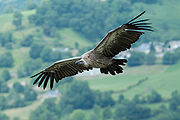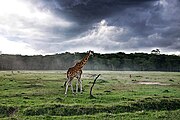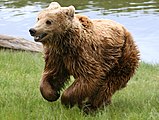 |
| Usa free Product |
Forever Living Products
| Multi-level marketing | |
| Industry | Manufacturing, marketing, distribution |
| Founded | 1978 |
| Headquarters | Scottsdale, Arizona, USA |
Key people
| Rex Maughan, Founder |
| Products | Aloe vera and bee-based products |
| Revenue | $2.6 billion (2014) |
Number of employees
| 4,100 (2006) |
| Subsidiaries | Forever Resorts, Aloe Vera of America, Forever Aloe Plantations, Forever Nutraceutical |
| Website | www |
Forever Living Products International, Inc. (FLPI) is a privately held multi-level marketing (MLM) company based in Scottsdale,Arizona, which manufactures and sells aloe vera-based drinks and bee-derived cosmetics, nutritional supplements, and personal care products.[1] The company was founded in 1978 by CEO Rex Maughan. After acquiring the company Aloe Vera of America by the 1990s,[2] In 2010, the company reported having over 4,000 employees, a network of 9.3 million distributors, and revenue of $1.7 billion.[3][1]
Contents
[hide]History[edit]
Forever Living was founded in 1978 in Tempe, Arizona as a direct-sell company[4] by businessmen Carl Jensen and Rex Maughan.[1]By the 1990s, Maughan had purchased the Texas company Aloe Vera of America, with Aloe Vera of America selling its products to Forever Living for distribution.[2] Some journalists have likened the multi-level marketing business model of Forever Living's distribution system to that of a pyramid scheme.[5]
In 1983, the company was named No. 6 on Inc. Magazines annual Inc. 500 list of the fastest-growing private companies in the United States.[6]
According to Arthur Andersen's Top 100, as of 1993, Forever Living Products International was Arizona's second-largest private company.[7] As of August 1995, Forbes reported the company's product line included "deodorants, toothpaste, laundry detergent and three dozen other products, nearly all of which contain extract of aloe."[8]
Annual revenue exceeded $1.15 billion in 2005[1] and Forever Living ended the year with around 150,000 distributors,[9] and 55 employees.[10] The following year Forbes named Forever Living as No. 340 on the Forbes 400 list, which ranks the largest private companies in the United States. With 4,100 employees, at the time Forbes stated the company was "the world's largest distributor of aloe vera and beehive-based products."[1] At that point the company was selling "aloe vera gel, natural aloe vera drinks, vitamins, and glamour and skin products in 100 countries."[1]
In 2010, revenue was $1.7 billion, and the company was selling its products through 9.3 million distributors.[3] In 2013 the publication New Vision reported that Forever Living had over 20,000 distributors in Uganda, of which only 83 had reached a managerial level and begun to recoup expenses; their investigation concluded that Forever Living Products' "distribution system does not guarantee profits and majority of members drop out along the way, after losing millions."[11] The company was active in over 150 countries as of 2015.[4] In February 2015, the company announced they had appointed a new management team to "oversee the affairs of the company in Nigeria."[12]
Legal[edit]
In 1996, upon suggestion of the American authorities, the Internal Revenue Service (IRS) and the National Tax Agency Japan (NTA) initiated a joint audit of Rex and Ruth Maughan and related entities Aloe Vera of America (AVA), Selective Art Inc., FLP International, and FLP Japan for the period of 1991 to 1995.[13] In 1997, the NTA imposed a penalty tax of 3.5 billion yen on Forever Living’s Japan division for concealing income of 7.7 billion yen over the five-year period.[14] Later that year, AVA, Rex and Ruth Maughan, Maughan Holdings, Gene Yamagata, and Yamagata Holdings[15] sued the IRS for unauthorized disclosure of tax return information.[14] In the midst of the lawsuit, The IRS asked the NTA to drop its decision against Forever Living, and in 2002, the agency “grudgingly complied with the IRS's request”, announcing that the penalty tax had been effectively withdrawn.[14] In February 2015, a USA district court ruled that the IRS knowingly provided some false information about AVA to the NTA, in violation of the United States' tax treaty with Japan.[16] and awarded three of the plaintiffs one-thousand dollars each in statutory damages.[16]
In 2004 claims made about Forever Living products were found to be in violation of several laws in Hungary related to advertising, registration of nutritional products, and the use of cosmetics as medicinal agents. As a result, the company was fined 60 million HUF (approximately $280,000 USD).[17]
In 2007, author Richard Bach made claims against the company for copyright infringement and trademark infringement.[18] The lawsuit stated that for over 20 years Forever Living had used the character, storyline, and copyrighted excerpts from the novel Jonathan Livingston Seagull to promote its marketing plan, and also used the motion picture and novel as its corporate logo.[19][20] The claim was satisfied through arbitration,[21] and shortly after, Forever Living changed its company logo[22] from a seagull to an eagle.[citation needed]































